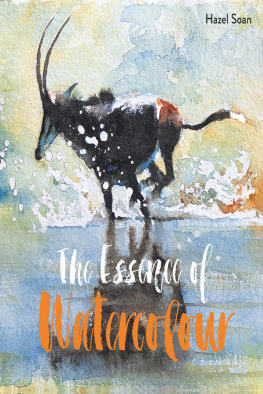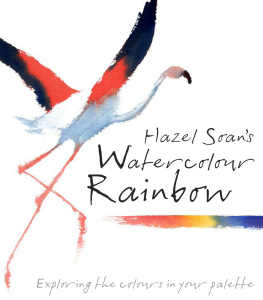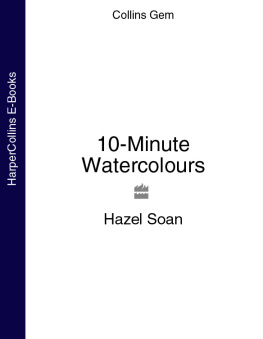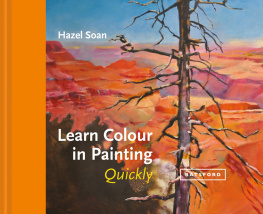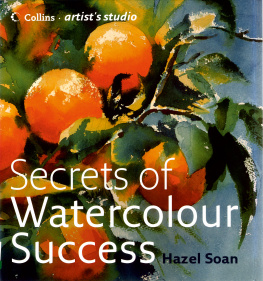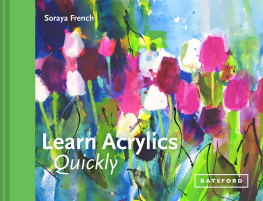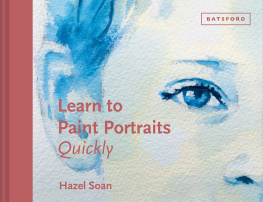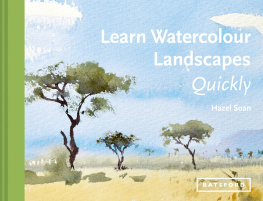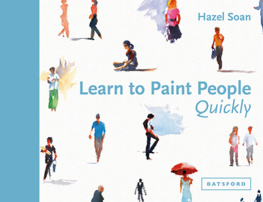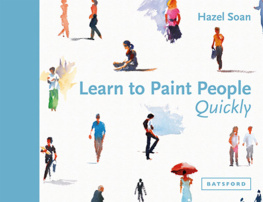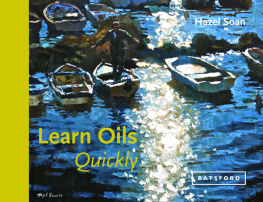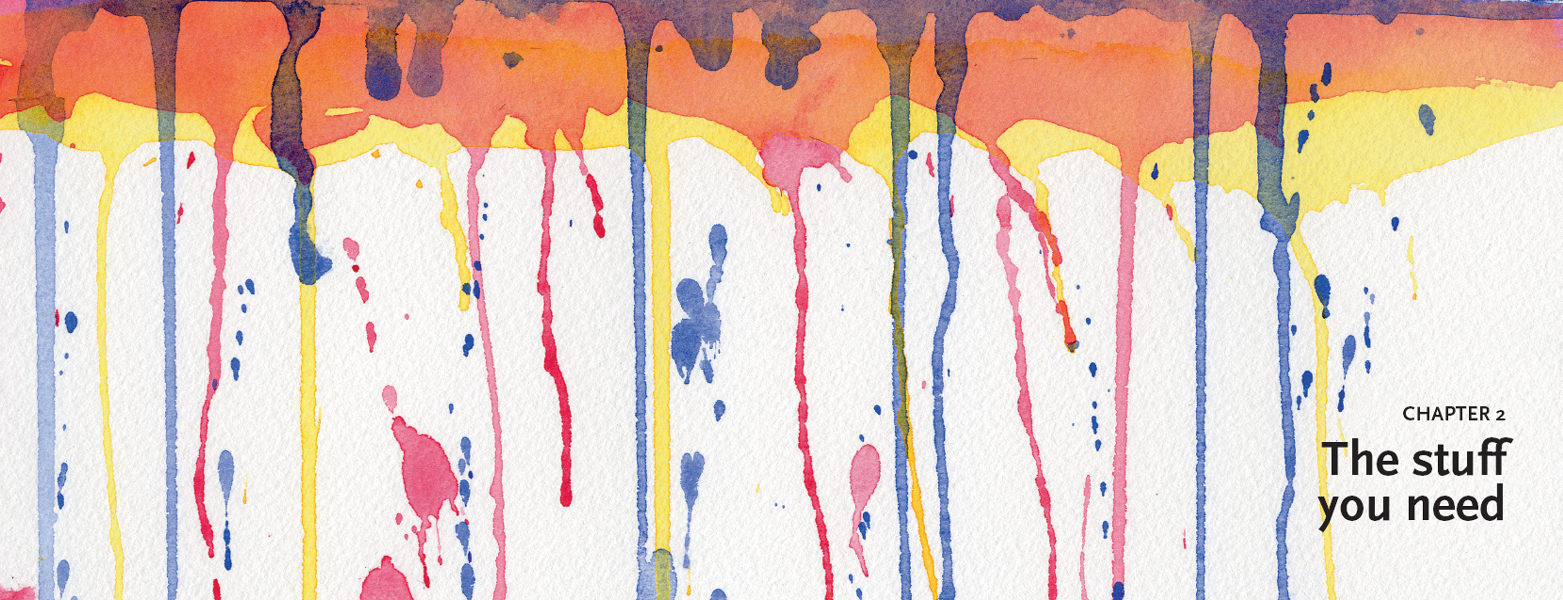
LEARN
WATERCOLOUR
QUICKLY

Piazza dei Signon, Verona(28 x 35.5cm / 11 x 14in)
LEARN
WATERCOLOUR
QUICKLY
Hazel Soan

Acknowledgements
Thank you to Kristy Richardson and Zo Anspach for bringing this book into fruition. To Cathy Gosling for believing in me and to Tina Persaud for asking. To my husband John and son Sean, always many thanks for your support.
Contents
CHAPTER 1
What you should know
about watercolour
CHAPTER 2
The stuff you need
CHAPTER 3
Choosing the colours
CHAPTER 4
Putting paint on paper
CHAPTER 5
Selecting a subject
CHAPTER 6
Go for it!
Introduction
I guess you picked up this book because youve always wanted to paint watercolours but havent got much spare time. Or maybe you just like learning new things quickly. If so, this book is for you. You can read it from cover to cover in about 30 minutes and, before you reach the end, you will be ready to start painting.


Floating By(15 x 20cm / 6 x 8in) Watercolour is a medium that can very quickly catch the essence of a subject.

Jewel of the Adriatic(28 x 38cm / 11 x 15in) With just two colours, light red and Ultramarine, the captivating medium of watercolour is able to evoke the glorious light of the rising sun over a majestic silhouette in Venice.
The medium of watercolour
Watercolour is a transparent painting medium that is diluted with water, mixed on a palette with a brush and then applied to paper. The light in a watercolour painting is represented by white paper, the painter paints the shade and tints the light. Watercolour paper is heavier than cartridge paper to prevent it from buckling when wet. You can use any tool to apply watercolour, but the brushes that are made especially for this medium make it much easier to get satisfying results.
You need only the desire
Watercolour is known for its radiant washes and clarity of colour. The appearance of the watercolour is more important than the content it conveys grasping this concept allows even a beginner to achieve attractive results. Always keep it in mind that you are using the subject to paint a watercolour rather than watercolour to paint the subject.
It is true that mastering watercolour to a high level of expertise will take time, even a lifetime, but the beauty of this medium can be found as soon as you start, just by letting the lovely pigments and papers do their stuff and not worrying too much or trying too hard.

The Student(28 x 36cm / 11 x 14in)
Be curious
Inquisitive people learn fast; art does have rules, but there are no boundaries. Here is a medium that benefits from thought before action and enjoys concentration. Less is more should be the watercolourists motto and being succinct often takes more preparation and care than being long-winded.
Do not be afraid to experiment even though you may waste paper in doing so, and dont be afraid to break the rules. Most great discoveries are made by mistake, so get out of your comfort zone and explore the medium. As much as is possible, paint from life rather than from photographs. Great pleasure is found in the process of painting and if you produce a worthwhile result, bliss will be your reward. The exciting thing about watercolour is that it actually does provide an adrenaline rush because of the precariousness that can be involved in using this medium.

The Lighthouse(25 x 25cm / 10 x 10in)
Creation and failure are interlinked
Creation and failure are inescapably linked: without doubt, among your successes there will be failed watercolours. These are part of your creative archive and are just as important as the paintings you come to cherish: get used to it, dont let it get you down, just carry on.
Watercolour can be unforgiving, but usually only when it is overworked and loses its fresh and lively appearance as you havent got much time, you are unlikely to fall into this trap! If it goes wrong it is only a piece of paper, so simply get a fresh piece and start again.

Crossing the Kalahari(23 x 30cm / 9 x 12in) You need very few colours and little time to paint a watercolour. Here Ultramarine, Yellow Ochre and Permanent Rose are used in combination to create this desert scene in just a few minutes.
Less is more
You do not need many materials to paint good watercolours. Less is more is the watercolourists maxim and applies to the materials as well as the actual painting. Art shops can be overwhelming. All you need to start with is one fairly large or medium-sized sable brush, three to six tubes of paint, a palette to mix on, watercolour paper, water and some kitchen towel. If you want to work more upright, a lightweight, portable, folding easel is ideal as it can be carried outside. Alternatively, work flat; sit on a seat or stool and hold your painting on your knees or work at a table you cant then tilt your paper in any direction.

Curious Giraffe(56 x 38cm / 22 x 15in) I worked flat to ensure the paint for the patches on the neck could spread out evenly in all directions.
Dont buy cheap products
Do yourself a favour: buy artists-quality materials. These may be more expensive, but buying cheap watercolour paints is a false economy it makes the painting process harder, and the paint doesnt go so far or bring such good results.
Next page

